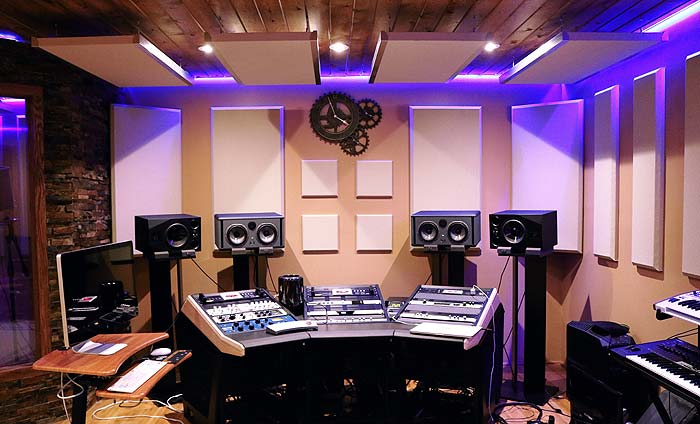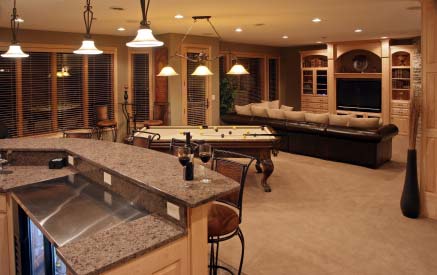Building a proper and classy music room is among the toughest challenges that musicians and drummers face. A well-designed music room can make the difference between smooth sailing and significant headaches down the road. By and large, there are various things to think about when constructing a music room. While most people are inspired to buy lots of equipment, they tend to forget very important basics including choosing the right material for the flooring and walls, which account largely for soundproofing. The following are four critical things one should remember when building a music room.

Location is a Vital Consideration
Choosing the right location for a music room not only helps one to get the most out of the space but also ensures that the neighbors and other family members are protected from noise disturbances. First, determine the purpose of the music room—rehearsals, recordings, or performances. People who build a music room in their homes will often pick a room and customize it into a studio. In this case, it’s prudent to evaluate the room to determine whether it requires remodeling like replacing the floor, walls, or paint spraying the room as a whole. Certain rooms might require more soundproofing than others.
For practicing and performance purposes, a room in the back far away from the living space will be ideal to mitigate the noise. Besides, rooms at the center of the house are likely to experience plenty of interruptions. A basement is most often the ideal choice when setting up the music room. This is largely attributable to its ability to provide privacy coupled with controlling noise disturbances.
Consider the Acoustics
Music is totally about the quality of the sound. Therefore, it is paramount to build a soundproof space to ensure that no sound leaves or enters the room. Blocking the transmission of sounds goes a long way in enhancing acoustics. It can be challenging to create a room that serves well acoustically, but in-depth research and consultation with experts are key.
Adopt several sound absorption techniques for improving your music room’s acoustics. The make-up of the floors, whether tile, concrete, hardwood, or laminate, is a big factor in the way sound bounces around a space. Bigger than that are the walls and ceilings. If you can’t find a specialist to help you with the specifics, try the Chamber of Commerce.
Next-tier features will include sound-dampening panels. Experts already know about these but if you’re looking for a DIY project, there are numerous guides on the Internet to help you.
Choose the Right Flooring
Among the best acoustic flooring materials for a recording room includes hardwood, concrete, and tile. Hardwood flooring, in particular, goes a long way in absorbing sounds and vibrations and thus better acoustics. Nevertheless, you want proper installation. If not, the sound will be bouncing all over the place.

Hardwood flooring is often preferred because it’s easy to clean and it hardly absorbs dirt and debris like carpets. A clean space is vital for any performer, and more so for musicians. Hardwood floors are also beautiful, and if installed correctly, they can last for generations. However, it is important to consider the subfloor material to be laid before placing the hardwood. This is a crucial consideration during the installation of the floor. The subfloor should be of a material that is capable of holding a nail or a staple for as long as the hardwood flooring stays. Try not to use vinyl, ceramic tiles, or glued-down carpets.
When installing the floor, it is advisable to close all the ventilation as they can allow dampness, which will adversely affect the longevity of the hardwood. If one is building a music room in the basement that’s prone to excessive moisture, it is prudent to be careful about the flooring choices. Dampness causes some of them to swell, which might also damage musical instruments such as pianos and guitars. Moreover, this is unhealthy and might cause illnesses such as pneumonia. For basement music room construction, one should consider engineered hardwood flooring. This is perfect for installation using concrete subfloors since it can be floated and is less affected by humidity typically affecting the basement. You definitely don’t want mold in your basement!
When Building a Music Room Walls & Ceilings Are Important
When building a music room, the importance of considering the dimensions and finishing of the walls cannot be overstated. Some materials used on the walls cause excessive vibrations that interfere with the sound frequencies, ultimately producing fuzzy noises. Most music room designers recommend installing 5/8 inch walls covered with plaster to assist with vibration reduction. To prevent sound reflections completely, covering the walls with acoustic panels, foam pads, and carpet will help. Thicker walls mean more sound will be absorbed and thus fewer vibrations.
A well-built music room is very important in music production. A well-designed music room can make the difference between smooth sailing and significant headaches down the road.
However, building a music room requires skills and a great knowledge of acoustics. Various things ought to be considered when designing including choosing a quiet place away from distractions. One should also consider the purpose of the space and what needs to be put in place such as recording instruments and performance stage. More importantly, the music room should have appropriate floors and walls for improving the acoustic properties.



